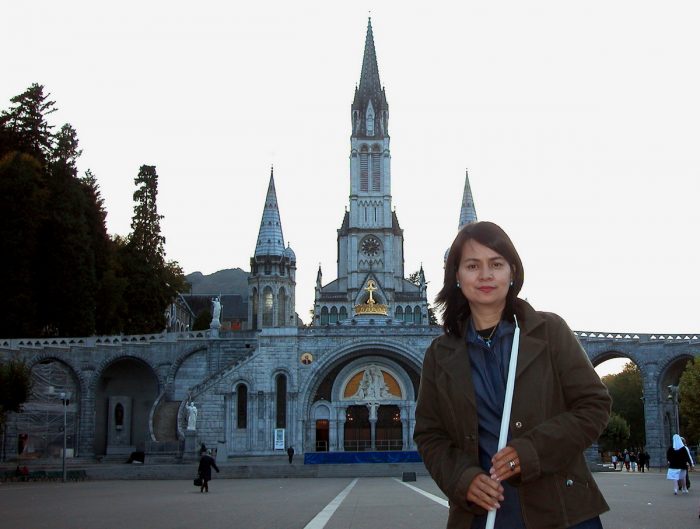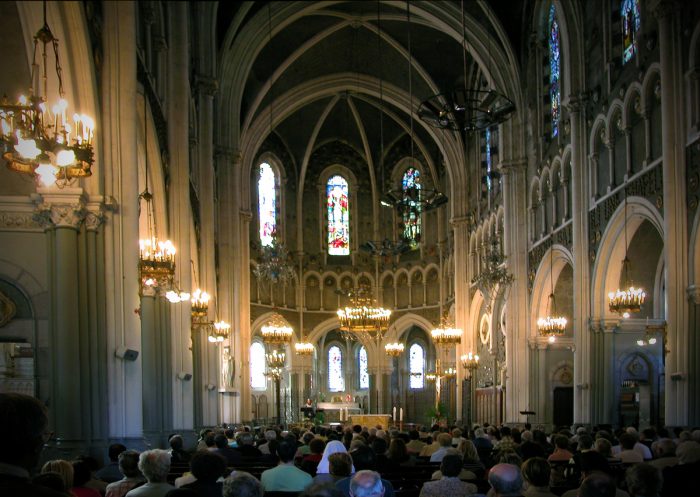Our Lady of Lourdes, France
The TGV high-speed train ride from Paris to Lourdes at the foothills of the Pyrenees mountains that serves as a geographical border between France and Spain took almost 5 hours. We arrived early in the bracing cold of a September morn.



Lourdes is a major pilgrimage place where people from all over the world come, so it was quite surprising that there were no crowds around when we came through the sanctuary entrance.




Back in 1858, a young girl named Bernadette Soubirous had a vision of the Virgin Mary by a cave in Massabielle, and these apparitions continued several more times. She was told to dig in the ground where water from a spring poured forth, which became known to have miraculous curative powers when one drank from it. It wasn’t long before hordes of people came, and a grotto was built on the site where people claimed that they got well from their illnesses.



The Church declared the events to be true, thus began the Marian devotion in Lourdes. It wasn’t long before a religious city sprang up, which has grown to encompass shrines, churches, and hospices along with a burgeoning tourist industry. Today, six million people visit annually.



The Basilica of the Immaculate Conception (also known as the Upper Basilica) sits on top of the rock above the grotto and looks somewhat like a Disney castle with its tall pointed spires and a wide curving ramp from the esplanade leading up to the main entrance door. The interiors are lined with a series of stained glass windows depicting events that happened in Lourdes. Below it is another church called the Basilica of Our Lady of the Rosary dedicated to the celebration of the Rosary designed in Byzantine style. There are many beautiful glass mosaic tiles on the walls and ceiling depicting the different traditional Mysteries. We attended Mass in both of them – one in Latin and the other in French, and my eyes strayed around the wall interiors looking at the magnificent designs on the stained glass windows while the service droned on……



There is a third church which is the Basilica of Saint Pius X, which is located underground and very modern in design which can accommodate 25,000 people, but we didn’t go there anymore. Instead, we trekked the nearby hill where there was a Station of the Cross. This 1.5 km. long trail had 115 bigger-than-life-figures in brightly painted cast iron depicting the 15 Stations of Christ’s suffering. It ended on the lower side where spring water was piped in thru numerous faucets where the faithful could drink it or fill up their containers to take the holy water home.





At night, lit candles in hand, we attended the torchlight Marian procession during which the different Mysteries were recited, and hymns were sang. Hidden speakers along the route hidden from sight played the chants so you could easily follow along. Even if you’re not a religious person, the spectacle is quite moving and could give you goosebumps as you watched this sea of humanity composed of all races from every corner of this earth, young and old, male or female, sick and healthy – all joined in unity, singing together in peace. That alone was worth the long trip…
Want more updates about other interesting cultural, heritage, and religious destinations in Europe? Follow #TeamOutofTown, on Facebook, Twitter, Instagram, Bloglovin, and Pinterest for more travel ideas.
Also read:
About the Author
Al P. Manlangit is a Filipino architect based in Kuwait who loves to travel and take photos everytime he gets the chance to do so. The genres that he explores are landscape, architecture, and street photography which come in handy wherever he goes. He blogs at designerq8.com, focusing on interesting places he visited with short stories to tell behind each frame.

